Quick Reference
1931
Burnt Hill, Heath, MA
Oil on Canvas
Landscape
Mountains, Late Summer
27" x 30"
Grand Central Galleries (NYC),1931
Myles Standish Gallery, 2x, 1931
Smith Coll. Tryon Gallery, 1931
A.A. Munson, New Haven, 1931
Unknown
NA
Related Links
Featured Artwork: September Evening
RSW's Diary Comments

 A topographical map of the area from Burnt Hill
A topographical map of the area from Burnt Hill
Road, Heath, east to Mt. Pocumtuck in Charlemont.
The two icons you see in the pic mark the key spots
By enlarging the image we offer illustrations and
names of locations, plus outlining geo-features...
"Painted prior to 1930. Evening painting of Mt. Pocumtuck made from Burnt Hill Road, just beyond driveway into Tripp's place, their south mowing showing in the foreground."
-sigLG.png?url=photos/evening_in_september(25)-sigLG.png)
 A close up of Woodward's signature on canvas
A close up of Woodward's signature on canvas
Editor's Note:
The name of the canvas you see above has not yet been confirmed and so it is still, technically, unnamed. However, it matches the description given by RSW and Boston art critic A.J. Philpott. This canvas is signed by the artist which means it met his standard of quality, so it could very well be September Evening. No name was given to us buy its owner. We are following up to see what more we can learn. Until then, we have to consider the painting image above as unnamed.

 Two photos side by side showing ten paintings exhibiting at the Myles Standish Gallery. All have been
identified but one. Its unique features upon closer inspection felt very similar to this previously unnamed painting.
Two photos side by side showing ten paintings exhibiting at the Myles Standish Gallery. All have been
identified but one. Its unique features upon closer inspection felt very similar to this previously unnamed painting.
Through the process of elimination we land on the name September Evening, read A.J. Philpott's description to
match them the canvas above. We then match RSW's diary entry to the geography and the rest is history.
Additional Notes

 From this illustration, you can the slope
From this illustration, you can the slope
of the face and groves of the ridge-line match.
Then there is the faint light clearing as well.
⮜ How were we able to identify this painting from a grainy 94 year old photograph?
The first thing we did was try to come up with paintings we felt had similar features or look. Our
first guess was that it looked like maybe it was a Mt. Aeolus in East Dorest, VT painting. To get
a better sense of it we needed to correct its perspective, square it up so we can look straight at it.
Once we did that, its likeness reminded us of an unnamed painting we have in our collection. Note the
light blob on the hill. What we initially thought was a cleared area of the hill turns out to be a
rocky shoulder that rides up what is a considerable mountain.
Then there was the distinct
notched groves along its ridge. At that point, we knew we had a match but not a name. We begin going
over the exhibition list of paintings, eliminating the ones we know, and looking up the ones we have
no image for hoping to get some description and September Evening fit the bill.
An evening
picture in September would be around 7pm, looking east holds the rising night with a glow above it,
and in this scene, a rising moon as well. You cannot see the sky very well in the old picture because
it is getting a strong glare from the bright sun shining through the gallery windows. The silhouette
of the mountain was enough for us to make a determination... it was also how we named White Clouds.

 Boston Globe, March 10, 1931
Boston Globe, March 10, 1931
Boston Globe, March 10, 1931, by A. J. Philpott
"September Evening is a color poem -- a meditative landscape -- rich in color
and full of blue mystery...
'White Clouds' is a picture which I will appeal to those who have
been fortunate enough to have seen the luminous beauty of such a sky on a clear Summer day in the hills.

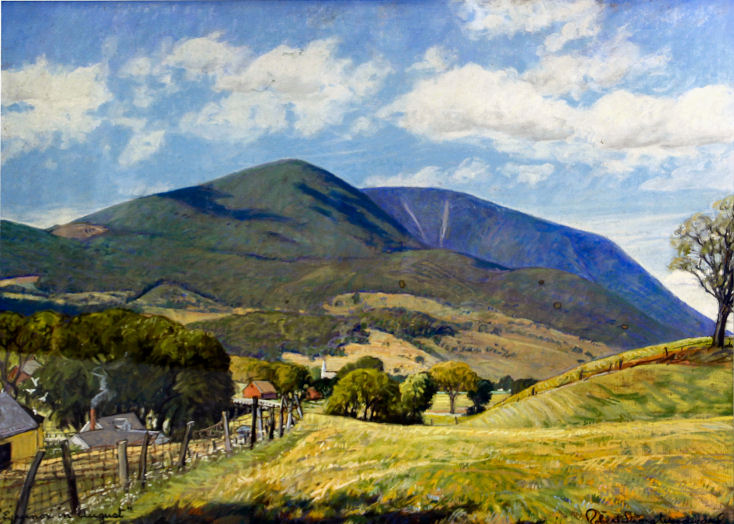
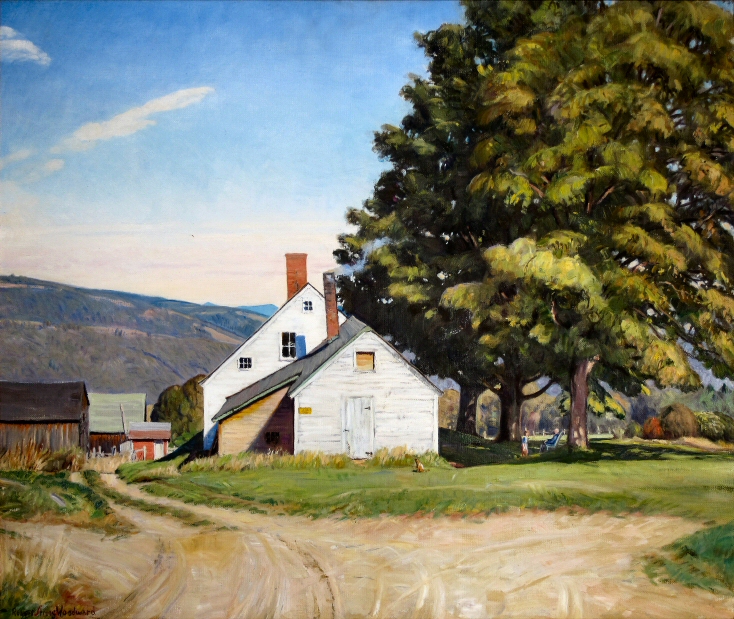
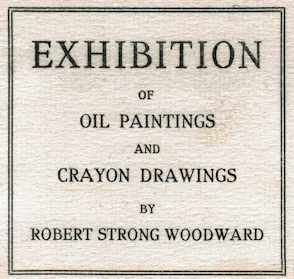
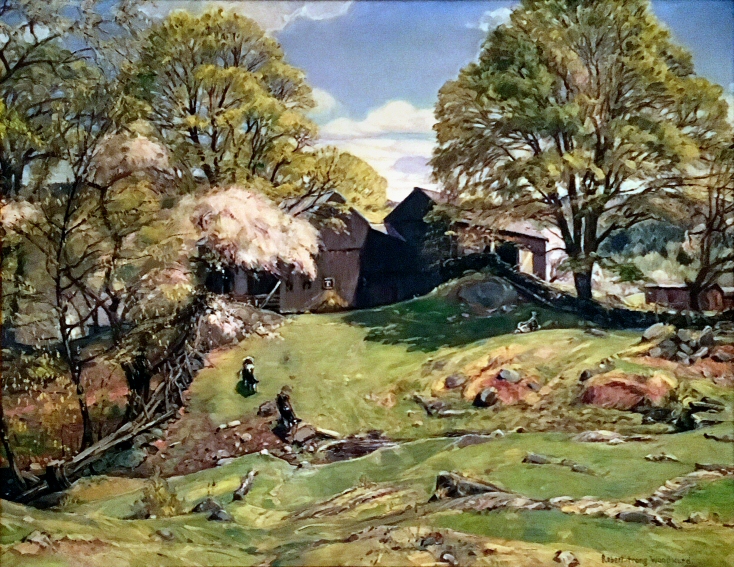
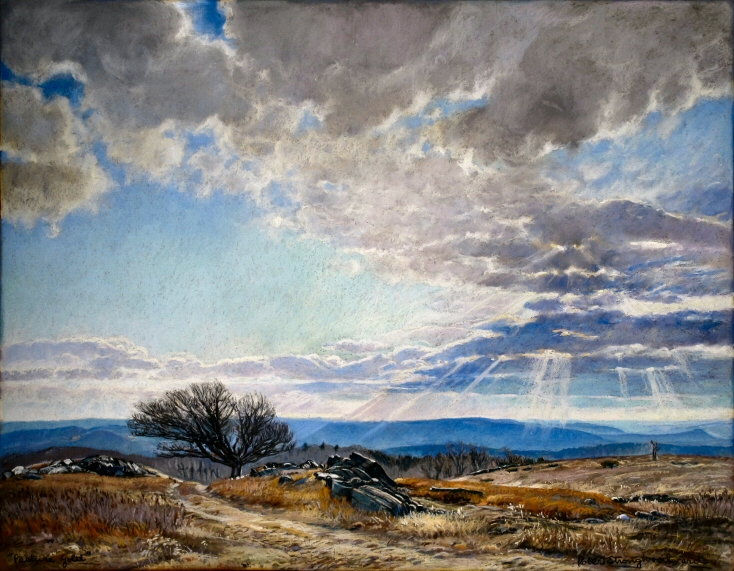

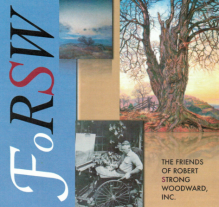
734.png)